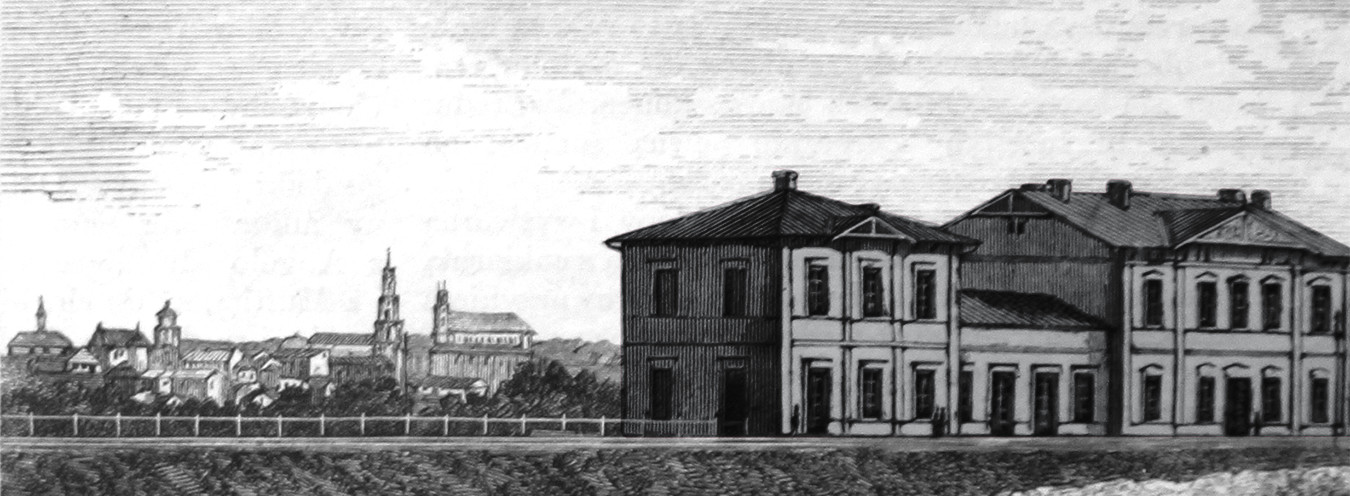
The Mincel Family
Jan Mincel, an old man with a red face and a tuft of grey hair on his chin. At all hours of the day he would sit by the window, in a leather armchair, dressed in a blue fustian robe, a white apron and a white nightcap. (17)
Jan Mincel Senior appears in the fifth instalment of The Doll, released on 4 October 1887 in Kurier Codzienny. He is a patriarch of a merchant family and runs a shop in Podwale. In Prus’s novel, he represents the German minority. He can speak Polish, although with a thick German accent, but his mother, referred to as Grossmutter (grandmother), speaks German only. Old Mincel is Ignacy Rzecki’s mentor. Rzecki, in turn, introduces Wokulski to the Mincel family.
Mincel’s shop, due to its democratic quality, becomes the spatial centre of the novel, claims Ewa Paczoska. Jan Mincel has two nephews: Jan and Franz. The former considers himself a Pole and an heir to the traditions of the Polish gentry, whereas the latter identifies with the German heritage. Jan Mincel enters into a partnership with Wokulski, and hence the shop’s name: Mincel&Wokulski. When Jan Mincel dies, Wokulski marries his widow Małgorzata.
The authentic Mincels were a merchant family from Lublin, where they arrived with the wave of German migration to the east. Jan Mincel was born on 1 March 1795 in Oberprechau, Bohemia. He most likely came to Lublin in the 1820s, as the mentions of his house and shop date back to this decade. One of the most important groceries and haberdasheries in Lublin, the shop was located on Krakowskie Przedmieście Street, across from the Holy Ghost Church, next to the Kraków Gate and Town Hall Square. According to the land registry, between 1838 and 1864 Jan Mincel and Józef Wencel co-owned a house on Krakowskie Przedmieście 6, which was later solely owned by Jan Mincel (house number 196, registry number 132). The ground floor of the house was occupied by the shop. It had a double-door entrance with a roof over it. There was a shop window on the left. The interior was long, high-vaulted, and dark. A room which was for a clerk to live in was located at the back. The studies of Lublin’s economic history emphasise that Mincel’s shop was one of the most famous companies owned by Christians (next to the shops belonging to Karol Bełcikiewicz, Kasperek, Trojański, Adam Frycz, Henryk Hoene, and Stanisław Streibel) and his house was one of the most palatial. Jan Mincel died in Lublin on 29 July 1864 and is buried at the cemetery on Lipowa Street (section 4).
If Jan Mincel were meant as an episodic comic relief figure or an embodiment of the stereotypical German, he would not be provided with a more developed familial context than his Grossmutter. Yet he is represented with two nephews, who point to the complex issue of the Polonisation of Germans, a quite rapid phenomenon in urban areas in the nineteenth century. Franz Mincel says, our father came here with nothing but a barrow and two dogs. Just as the historical Mincels, using investment opportunities, they began to climb up the social ladder: from a plain kiosk, to a shop in the best district, to official positions that were traditionally reserved for the upper-bourgeoisie. The next generation of the Mincel family is fairy Polonised and treated with respect in Lublin.
The Polonisation of the Mincel family is undisputed. Whereas Jan Mincel does not mention his nationality and behaves as a typical German, his nephew Jan Mincel, Jr., considers the family to be of Polish descent: Jan Mincel was romantic and enthusiastic, Franz was phlegmatic and bad-tempered; Jan was an enthusiastic Bonapartist, Franz a republican and special foe of Napoleon III. Finally, Franz admitted his German origin, whereas Jan solemnly declared that the Mincels were descendants of the ancient Polish family of Mientuses, who settled among the Germans perhaps under the Jagiellon dynasty or under the elected kings.
The historical Jan Mincel could have been an ordinary son of a merchant, but he had higher aspirations. He was born in 1822 and there is a notice next to his name in the census: cripple for life. He was engaged in the priest Piotr Ściegienny plot together with a group of Lublin youth, which was discovered in 1844, and its participants were arrested.
→ Warsaw Merchants; → Bourgeoisie;
Bibliografia
- H. Gawarecki, O dawnym Lublinie. Szkice z przeszłości miasta, 2nd ed., Lublin 1986.
- J. A. Malik, Lalka. Historie z różnych światów, Lublin 2005.
- E. Paczoska, Lalka czyli rozpad świata, 2 ed., Warsaw 2008.



